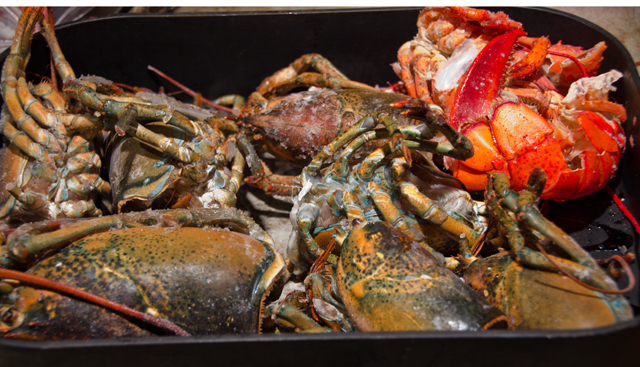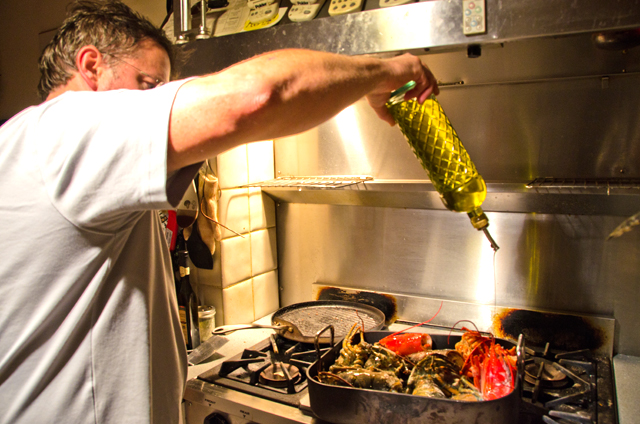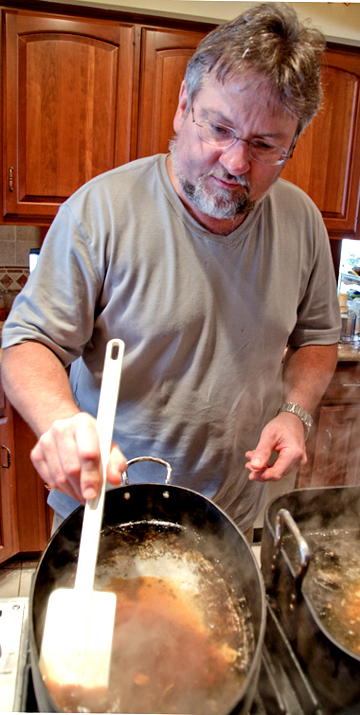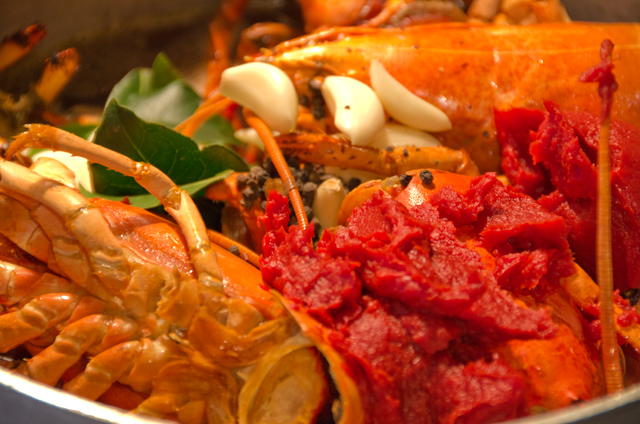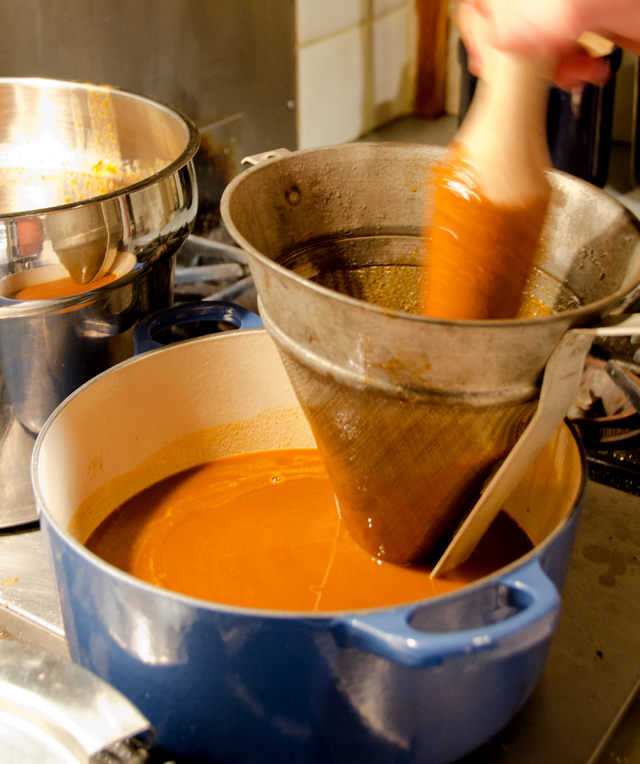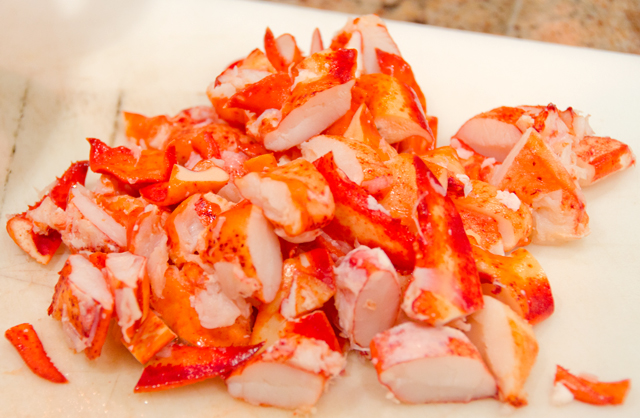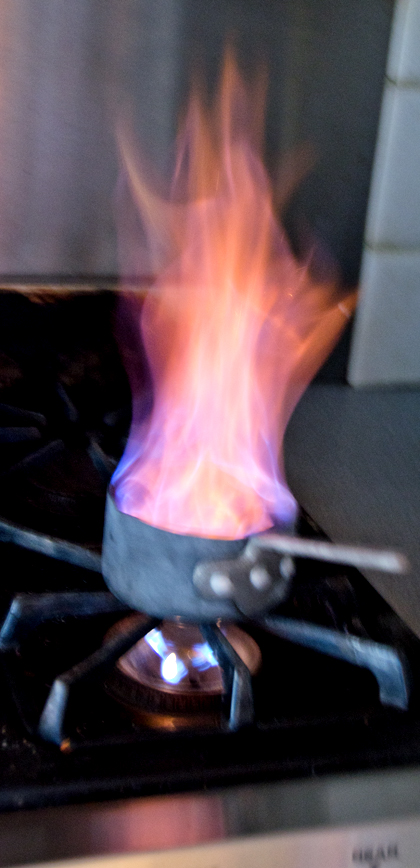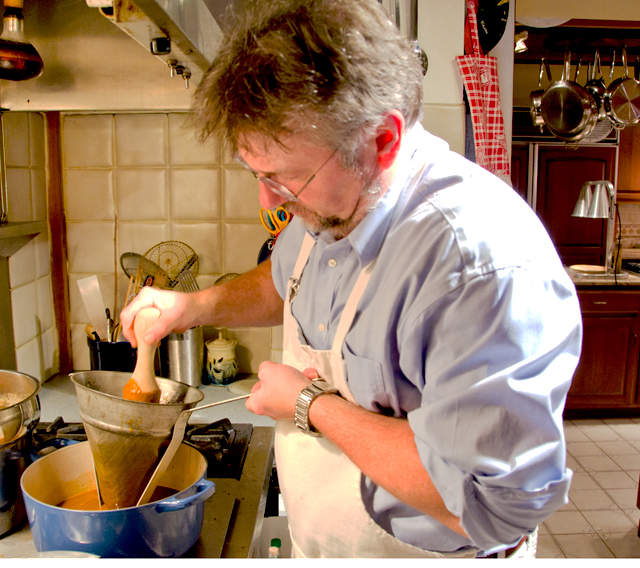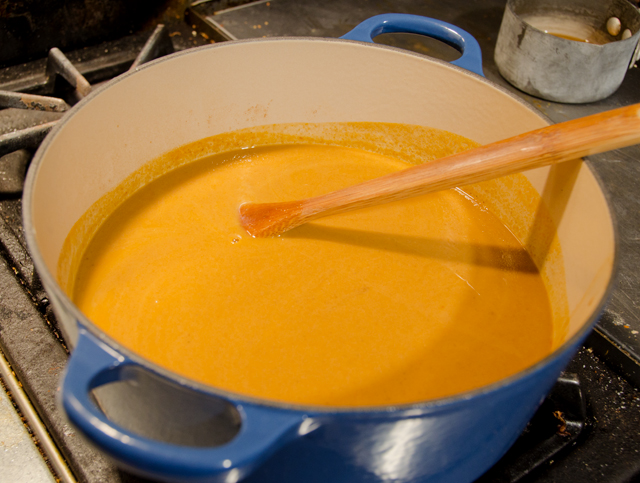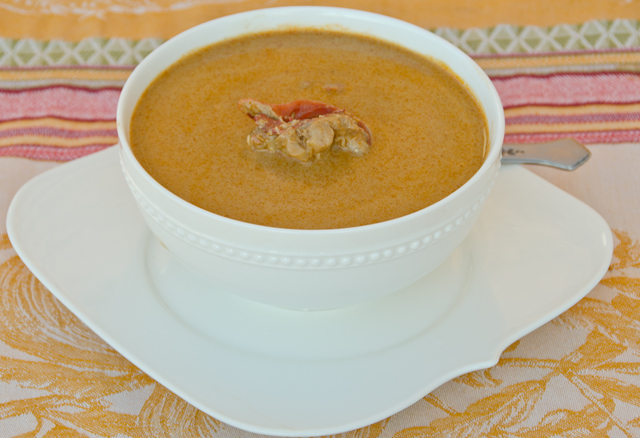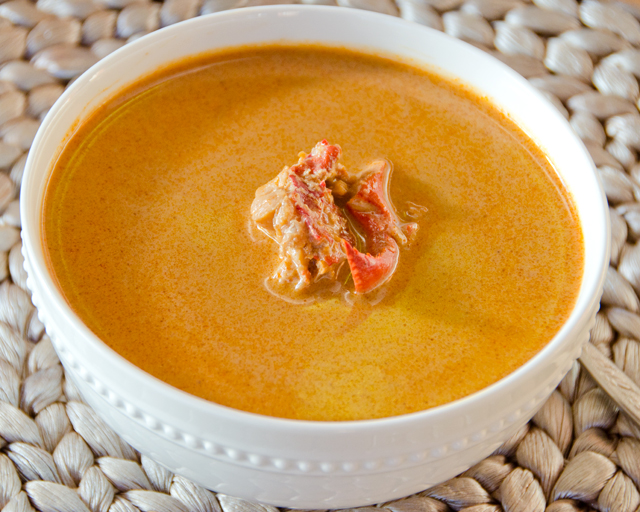 Our New Year’s Eve tradition for almost thirty years is the anti New Years Eve celebration of most people. Our evening is very low key. We get together with one couple, cook a nice, but somewhat indulgent meal of surf and turf, curl up on the couch and watch movies until the ball drops.
Our New Year’s Eve tradition for almost thirty years is the anti New Years Eve celebration of most people. Our evening is very low key. We get together with one couple, cook a nice, but somewhat indulgent meal of surf and turf, curl up on the couch and watch movies until the ball drops.
The highlight of this feast is a rich and flavorful lobster bisque that we have been making for 23 years now. Not a dish you would have every day or every week for that matter, but a nice splurge for a special occasion. This recipe is from a January 1990 Bon Appetit article with recipes from Jasper White, chef, restaurateur and New England seafood expert . Mr White offers his bisque recipe which he describes as “the perfect starter for a winter night.”
To say this recipe is a bit indulgent would be an understatement. It is not every day sweet briny lobsters, fragrant golden saffron and silky cream are combined in a luxurious soup. A warm winter resulted in a lobster glut in 2012 and we took advantage of the occasional weekend sale at our local markets. After enjoying lobster for dinner, we froze the body shells, planning ahead for the New Year’s Eve bisque. My fishmonger sells lobster bodies at a much cheaper price than whole lobsters and we also buy these to add to our stock. The shells are roasted, then combined in a stockpot with herbs, vegetables, wine, stock and saffron. This wonderful soup simmers for hours on the stovetop and your house will smell so warm and rich you will want to bottle the fragrance!
A bisque by definition is a rich, creamy soup made with shellfish, specifically crustaceans, in this case lobster. The addition of lobster meat to the final bisque is just an option, so that is one way of keeping the cost down.Though rice is the classic thickener for a bisque, tapioca starch, not cornstarch or arrowroot is the choice for this recipe. I’ve learned that tapioca starch thickens quickly and at a lower temperature than the other options. Tapioca grains don’t always dissolve completely, so straining the bisque twice eliminates that problem. In past years I made the veal stock that is called for in this recipe but I no longer have a source for veal bones. I use the reduced chicken and beef stock mentioned in the recipe, enhanced with a little veal demi glace. Many supermarkets carry the D’Artagnan brand. A little Cognac or another brandy is flamed at the end, burning off the alcohol, bringing even more complexity to the final dish. The steps can be completed over the course of several days and the soup base minus the cream could be frozen for a future special occasion. Valentine’s Day, perhaps?
Lobster Bisque
Serves 8 to 10
Ingredients
- 3lbs cooked lobster body shells, halved lengthwise, head sacs removed
- 5T olive oil
- 2 large onions, coarsely chopped
- 2 large carrots, coarsely chopped
- 2 large celery stalks, coarsely chopped
- 10 garlic cloves, coarsely chopped
- 3 quarts plus 1 cup water
- 2 c rich veal stock, or three cups canned low-salt chicken broth and 1 cup canned unsalted beef broth, reduced to 2 cups
- 1/2 of a 7.5 ounce container of veal demi glace (optional)
- 2 c dry white wine
- 6T tomato paste
- 1T whole black peppercorns
- 10 fresh tarragon sprigs
- 4 fresh thyme sprigs
- 3 bay leaves
- 1/2t dried red pepper flakes
- 1/2t saffron flakes
- 1/4 c quick cooking tapioca
- 2c heavy cream
- 1/4c Cognac or other brandy
- 1c cooked chopped lobster meat in 1/2 inch cubes
- Kosher salt and freshly ground pepper
Directions
- Preheat oven to 375F. Transfer lobster shells to roasting pan. Drizzle with 2T olive oil. Roast until aromatic and slightly charred, stirring occasionally, about 45 minutes.
- While the shells are roasting, heat remaining 3T olive oil in a heavy large skillet over medium high heat. Add onions, carrots, celery and garlic and cook until light brown, stirring frequently, about 8 minutes.
- Transfer lobster shells to a large stockpot. Set roasting pan over high heat. Add one cup water and bring to a boil, skimming foam from the surface. Stir in the sauteed vegetables, tomato paste, peppercorns, herbs, pepper flakes and saffron. Simmer until liquid is reduced to 6 cups, stirring frequently, about 1 1/2 hours.
- Stir tapioca into bisque and let simmer until thickened, stirring frequently, about 30 minutes. Strain bisque through a coarse sieve, pressing on solids to extract as much liquid as possible. Strain bisque again through a fine sieve into a heavy large saucepan. Can be prepared ahead, cover and refrigerate for two days or freeze for future use.
- Bring bisque to a gentle simmer, skimming surface if necessary. Add cream and heat through. Gently heat Cognac in a heavy small saucepan. Remove from heat and ignite with match. Allow flames to subside completely, then add to bisque. Add lobster meat if using and heat through. Season to taste with salt and pepper. Serve immediately in warmed bowls.
